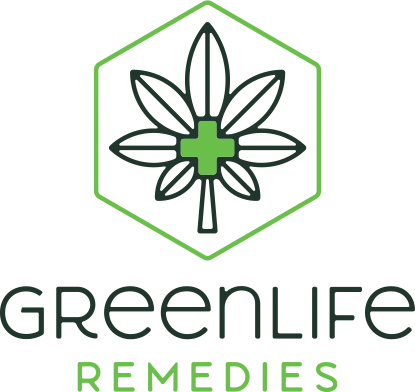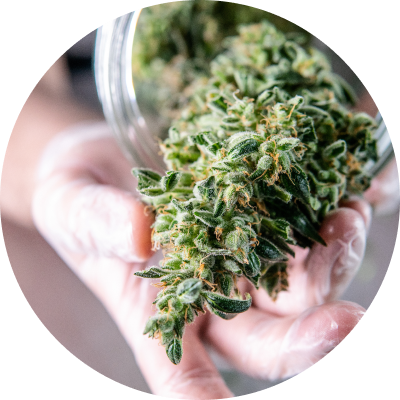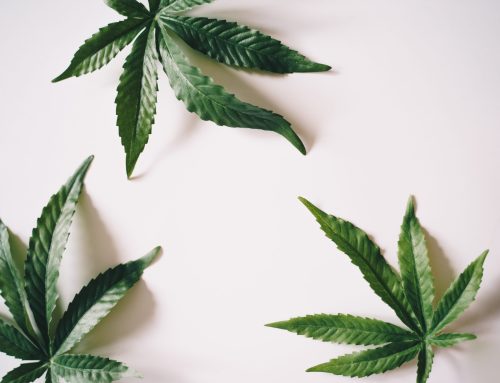Since hemp was legalized in 2018, the CBD market has grown into a hugely successful industry, thanks to the genuine help that it’s been able to provide generations of individuals with all kinds of daily needs. Many people take CBD, aka cannabidiol, daily, to manage everything from sleep to inflammation.
Because of that, it’s no surprise that an influx of physical therapists are incorporating CBD products into their practices. And, CBD may be particularly useful compared to many other products of a similar nature, thanks to the unique way in which it interacts with the human body, through the endocannabinoid system.
CBD (Cannabidiol)
First and foremost, let’s clarify some things about CBD, since a lot of people out there still don’t have a lot of experience with it or know much about it. CBD is the dominant chemical compound in the flowering buds of the female hemp plant, and it’s classified as a cannabinoid – a unique type of compound found in cannabis. Hemp is a nonintoxicating plant, unlike the other member of the cannabis genus, marijuana. And, CBD, short for cannabidiol, has zero intoxicating properties, so no matter how much you take, you won’t get high. It’s worth pointing out that CBD is also completely nontoxic.
Because CBD is a cannabinoid, it has the unique ability to attach itself to cannabinoid receptors found throughout the body. These cannabinoid receptors belong to the body’s endocannabinoid system (ECS), and are found widely throughout all systems of the body, including the nervous system, immune system, digestive system, cardiovascular system, etc.
The endocannabinoid system’s job is to keep the body in homeostasis. It does this by sending cannabinoids, either derived from cannabis or made within the body (endocannabinoids), to these cannabinoid receptors, which enables regulatory effects that improve our physiological processes – sleep, mood, inflammation, pain tolerance, and much more.
Taking CBD, therefore, enables the body to regulate itself, which can mean a vast array of potential benefits that directly affect how we feel, both mentally and physically.
What Kinds of Relief Could CBD Offer?
At the end of the day, CBD works with every system of the body to mediate regulatory actions that bring us closer to homeostasis. But, in terms of physical therapy applications, there are some major potential benefits associated with the cannabinoid that have been researched excessively. CBD was first isolated in the 1960s, and because of that, we actually have a wealth of studies that we can turn to in order to better understand its capabilities as they relate to things like pain, inflammation, and more.
It’s long been established that CBD can offer substantial potential benefits to those in physical pain. Study after study has given us ample evidence that the cannabinoid interacts directly with cannabinoid receptors that regulate pain. We want to reiterate that CBD works with a variety of bodily systems at the same time. Through its relationship with the immune system and peripheral nervous system, it can regulate the body’s inflammatory response, and in particular, the pain that is associated with inflammation. Through its relationship with CB1 receptors found within the brain, CBD is also able to regulate our body’s pain threshold, and our overall pain response. More recent studies, meanwhile, show evidence that cannabidiol can aid in relief from neuropathic pain, particularly when applied topically to the affected area.
Therefore, we can safely say that cannabidiol has been proven to offer both anti-inflammatory and analgesic effects, if we look at the extensive amount of studies that have been released over the last several decades. In addition to that, CBD has been shown to regulate the processes involved in sleep, which can be extremely useful to those recovering from injury or surgery, as the pain felt during the healing process can be disruptive to our sleep cycle.
An In-Depth Look at the Different Kinds of CBD Products You Can Try!
Now, let’s quickly go over the different kinds of CBD products that exist on the market, all of which can be useful to those in physical therapy in their own distinctive way. Naturally, if you are going to be working CBD products into your physical therapy sessions, you’ll likely have some guidance from your therapist as to which type(s) of products are ideal for your particular needs.
- CBD Topicals: Refer to any CBD-infused formula that’s intended to be applied to the skin, rather than taken internally. Topicals allow you to target the specific problem area, as the cannabidiol extract absorbs through the skin tissue and penetrates the deep tissue of the body. Topicals can take effect in as little as 10 minutes, lasting for up to 6 hours.
- CBD Edibles: Like gummies, snacks, baked goods, etc., allow us to ingest the cannabinoid, which means a longer onset time of up to 2 hours, as the cannabinoid takes time working its way through the digestive process. The effects, however, offer the longest duration, of up to 8 hours. And, many people say that edibles deliver stronger “body effects” than other methods – that is, a more soothing feeling within the body.
- CBD Tinctures: Also referred to as CBD oils, are usually taken sublingually, and they come in dropper bottles to make administration easy. Available in variety of milligram strengths, they allow the cannabidiol to absorb through the sublingual tissue, offering an onset time of about 30-45 minutes, and effects for about 4-6 hours.
- CBD Flower: Refers to the raw buds of the hemp plant, which are naturally high in cannabidiol, and naturally full spectrum. They can be smoked, vaped, or cooked/baked with, but overall, they offer high bioavailability as they deliver the beneficial compounds in hemp in their purest, rawest form. Flower comes in a wide array of strains, which is very useful, as certain strains of cannabis are more geared toward pain relief, etc., based on their terpene profiles as well as their cannabinoids.
- CBD Vapes: CBD vaping products, like vape cartridges and disposable vape devices, offer a very fast onset time of just a few minutes, with effects lasting for up to about 2-3 hours. They come in a variety of strains, like flower.
- CBD Concentrates: Also referred to as “dabs”, are highly concentrated, and therefore ultra-potent, products that come in a strain variety as well. They’re dabbed, using a high-temperature vaporizer device.
- CBD Capsules: Similar to edibles in terms of how they are used by the body, but without the addition of other ingredients.
- CBD Beverages: Beverage type like teas and soft drinks, also work just like edibles, but typically absorb and take effect more quickly due to their water-solubility.
Is CBD a Viable Option for Physical Therapy?
Now, let’s bring what we know about CBD and its potential benefits into the topic of physical therapy. Physical therapy is a form of therapy, also known as physiotherapy, that aims to help people recover from pain and/or lack of mobility. Physical therapists typically specialize in the needs of people who have been injured, have recently had surgery, or experience chronic pain/loss of mobility due to other causes, and develop personalized treatments that may involve exercises, stretches, and lifestyle changes to improve their condition.
Now that we know that CBD is potentially useful at aiding in pain, it’s easy to see why so many physical therapists recommend it. Unlike many pain medications, CBD is nontoxic, and generally, the body can tolerate high doses of it for long periods of time.
Bringing Up CBD to Your Physical Therapist
If you are interested in working CBD into your physical therapy regimen, we do suggest talking about it with your therapist. It’s important to go over questions such as:
- Which kind of CBD product should I take?
- What’s the proper milligram strength and dosage for my needs?
- How many times per day should I use CBD?
- Can I still take CBD if I’m on any medications?
- What should I do if I’m not seeing the results that I want right away?
Remember, not all physical therapists happen to have a lot of knowledge on cannabidiol and its various uses. So, you may want to do your own research, and establish a routine on your own, if you feel that it would be useful. You technically don’t require the approval of a physical therapist to take on a cannabidiol regimen. Just know that CBD may interact with certain medications by suppressing CYP3A4, an enzyme needed to metabolize a number of commonly prescribed medications, including several pain drugs.
Bottom Line: CBD Can Be Useful in Physical Therapy Settings
It’s clear that cannabidiol offers a lot of potential in terms of providing real relief to physical therapy clients. And, like we said, many physical therapists are flat-out recommending CBD these days, as they’ve seen the results that it can provide in a short period of time.
If you’re looking for CBD to help you through your physical therapy experience, explore the large variety of lab-tested, effective CBD formulas at GreenLife. Our products come in all kinds of delivery methods, strengths, strains, and more, so that you can find relief according to your most specific needs





